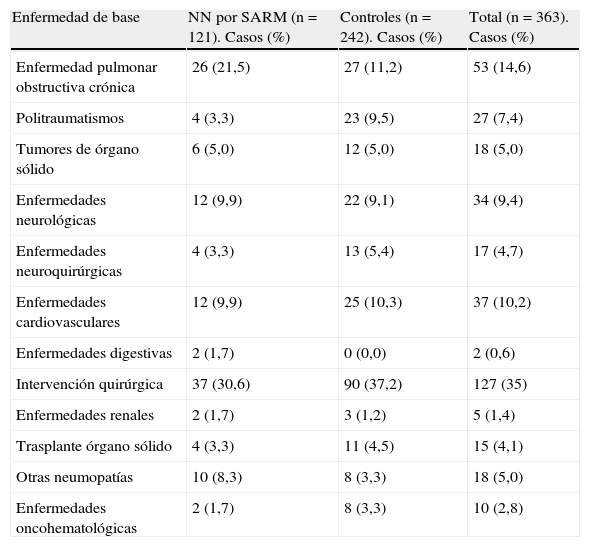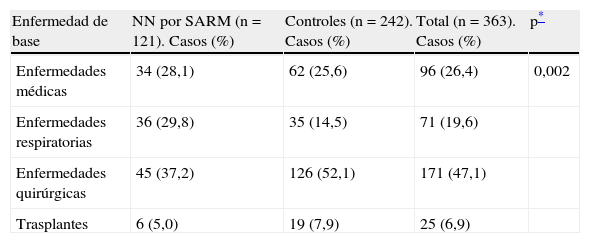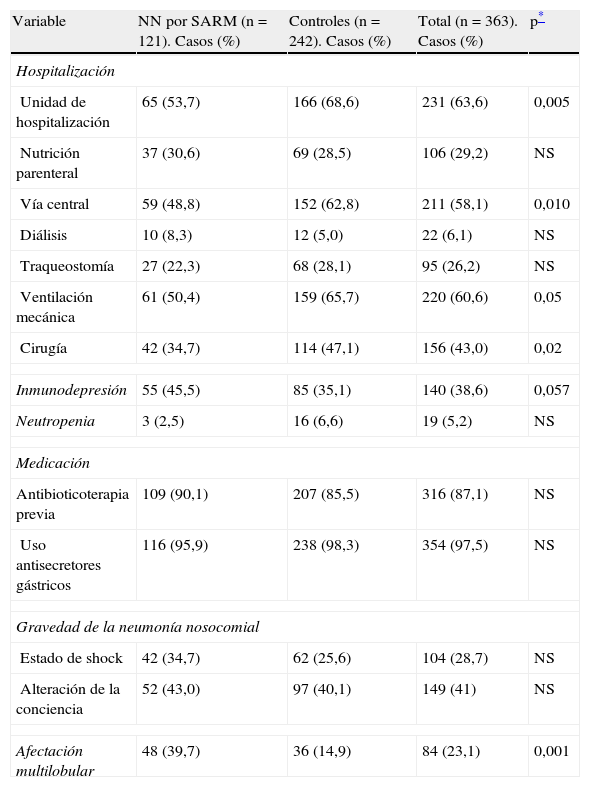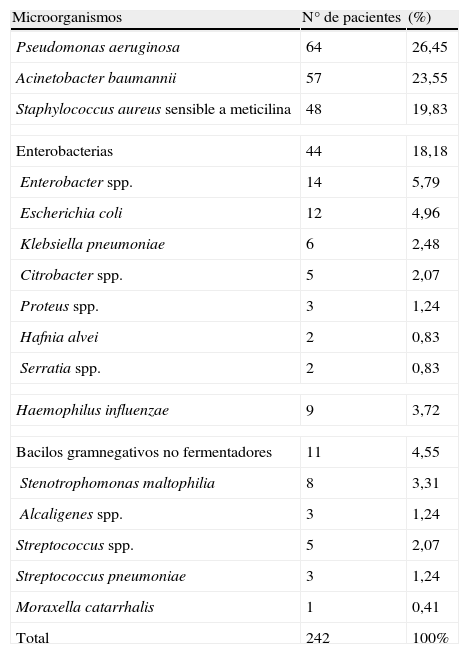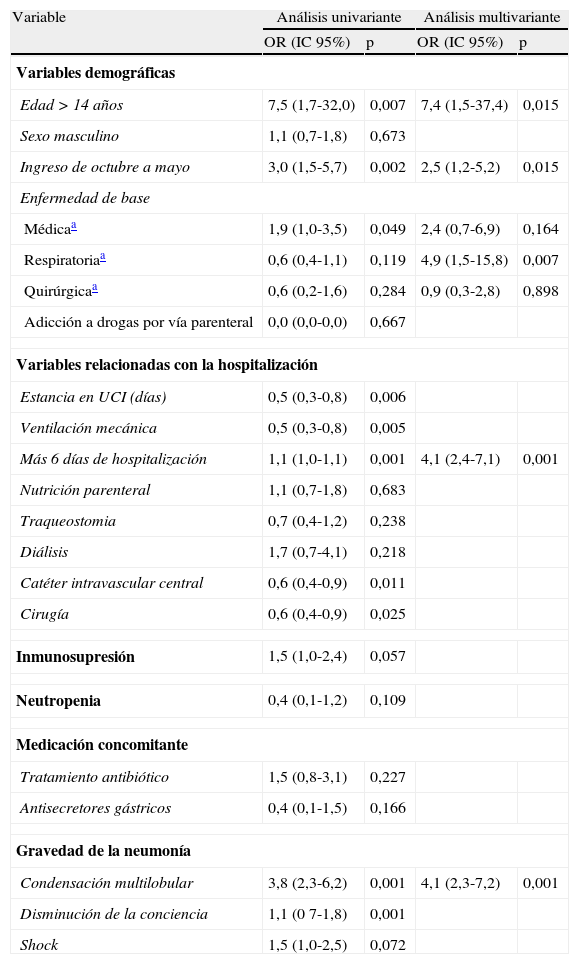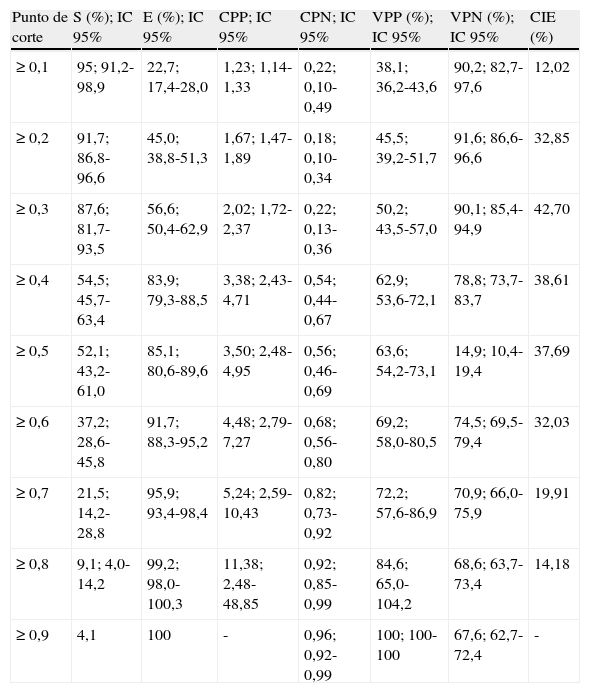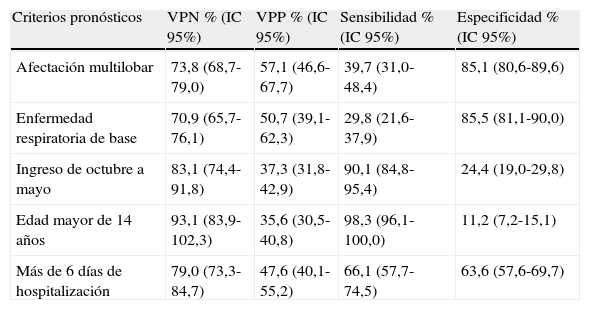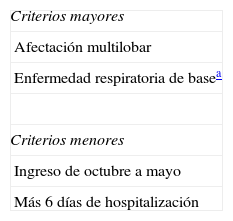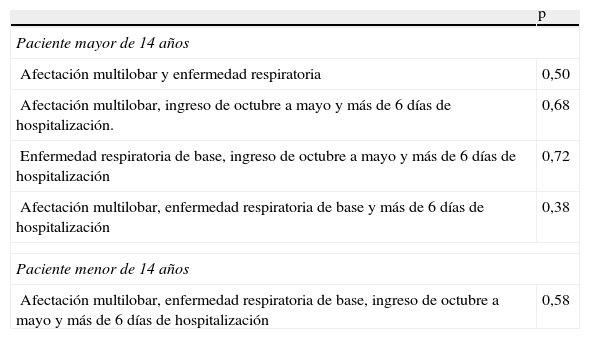Es necesario predecir una neumonía nosocomial (NN) por Staphylococcus aureus resistente a meticilina (SARM) para facilitar la inclusión de un antibiótico específico en la terapia empírica. En este estudio se desarrolla un modelo para predecir la probabilidad de NN por SARM cuando se desconoce el estado de portador y el diagnóstico microbiológico.
Pacientes y métodoSe diseñó un estudio de casos y controles, realizándose una regresión logística multivariable para identificar los factores de riesgo de NN por SARM. Se incluyeron factores demográficos, relacionados con la hospitalización, la inmunodepresión, neutropenia, la medicación y la gravedad.
ResultadosSe estudiaron 363 pacientes (121 casos y 242 controles). Permanecieron en el modelo final la edad>14 años (odds ratio [OR] 7,4, intervalo de confianza del 95% [IC 95%] 1,5-37,4, p<0,015), la aparición de la NN>6 días después del ingreso (OR 4,1, IC 95% 2,4-7,1, p<0,001), el desarrollo de la NN fuera del verano (OR 2,5, IC 95% 1,2-5,2, p=0,015), las enfermedades respiratorias (OR 4,9, IC 95% 1,5-15,8, p=0,007) y la afectación multilobar (OR 4, IC 95% 2,3-7,2, p<0,001). Con estas variables se calculó la probabilidad de desarrollar neumonía por SARM para cada una de las posibles combinaciones, clasificándose en criterios mayores y menores.
ConclusionesSe debe incluir cobertura de SARM en el tratamiento empírico de la NN cuando: a) un paciente adulto (>14 años) tiene, al menos, 2 criterios mayores o un criterio mayor y 2 menores, y b) un paciente<14 años tiene los 2 criterios mayores y los 2 menores.
To include a specific antibiotic in the empiric therapy, it is necessary to predict when a nosocomial pneumonia (NP) is caused by methicillin-resistant Staphylococcus aureus (MRSA). We have developed a model for the prediction of the probability of a NP being caused by MRSA, when the carrier status and the microbiological diagnosis are unknown.
Patients and methodsA retrospective case-control study (1999-2005) was designed. A univariate and multivariate logistic regression was performed to identify the risk factors for suffering a NP due to MRSA. Demographic factors, related to hospitalization, immunosuppression or neutropenia, to medication and severity were included.
ResultsThree hundred and sixty three patients (121 cases and 242 controls) were studied. The final model of multivariate logistic regression included an age>14 years (OR 7.4, CI 95% 1.5-37.4, P<.015), NP appearance>6 days after admittance (OR 4.1, CI 95% 2.4-7,1, P<.001), NP development excluding summers (OR 2.5, CI 95% 1.2-5.2, P<.015), respiratory diseases (OR 4.9, CI 95% 1.5-15.8, P<.007) and multilobar involvement (OR 4, CI 95% 2.3-7.2, P<.001).The probability of developing a pneumonia due to MRSA was studied for each of the possible combinations and subsequently classified in minor and major criteria.
ConclusionsMRSA coverage should be included in the empirical treatment of NP when: a) an adult patient (>14 years old) presents, at least, 2 major criteria or 1 major criterion together with 2 minor criteria, and b) a patient <14 years-old has 2 major criteria as well as 2 minor criteria.
Artículo
Comprando el artículo el PDF del mismo podrá ser descargado
Precio 19,34 €
Comprar ahora








